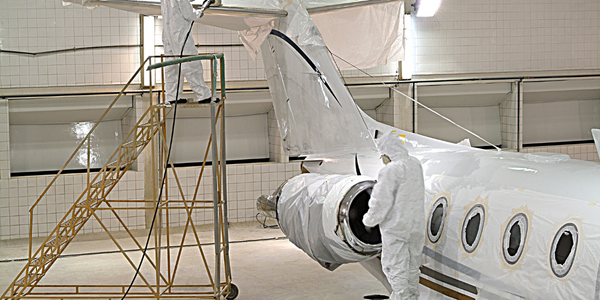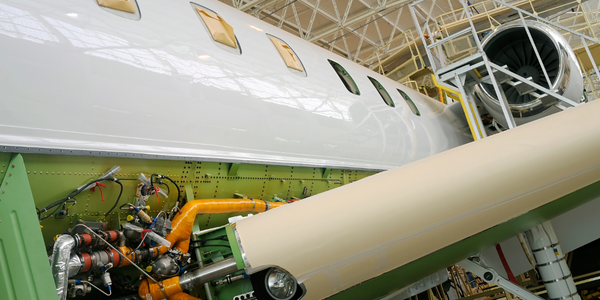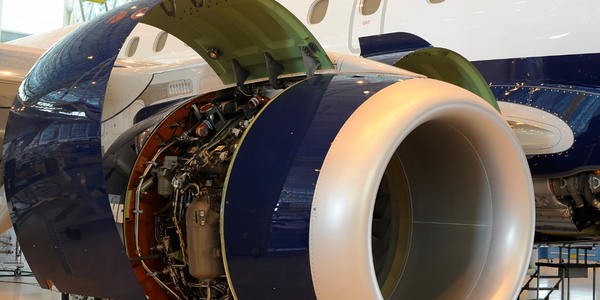技术
- 分析与建模 - 数字孪生/模拟
- 基础设施即服务 (IaaS) - 云计算
适用行业
- 航天
适用功能
- 采购
用例
- 数字孪生
- 虚拟现实
服务
- 硬件设计与工程服务
关于客户
本案例研究的客户是全球航空业领导者庞巴迪宇航公司。庞巴迪宇航拥有超过 35,500 名员工,在全球市场中处于领先地位。该公司以设计、制造和支持各种市场的创新航空产品而闻名,包括公务机、商用飞机、特种飞机和水陆两用飞机。在这个项目中,他们与 Rescale 和 Ubercloud 的 HPC Experiment 合作,展示了云中工业规模仿真对于工程和科学应用的有效性。
挑战
庞巴迪宇航公司是航空产品设计、制造和支持领域的全球领导者,致力于向大型和小型公司展示大多数工程和科学应用中云中工业规模仿真的可行性和优越性。该项目涉及飞机起落架周围不稳定气流的设置和模拟,这是一项复杂的任务,需要大量的计算能力和专门的软件。我们面临的挑战是提供一个能够处理项目计算需求的平台,同时又易于使用且易于访问。该项目是与 Ubercloud 组织的 HPC 实验结合进行的,仅使用开源数据和模拟工具。
解决方案
该项目选择了基于浏览器的模拟平台提供商 Rescale。 Rescale的平台用于作业的设置和提交,并且还提供了项目所需的计算能力,大约为数千个计算核心。使用的软件代码是Gerris,所需的模型文件来自美国航空航天研究所(AIAA)。客户使用其专有的文件传输管理器将模型文件安全地上传到 Rescale。随后,Rescale 的开发人员帮助设置了第一次试运行,包括选择软件、硬件和作业设置。 Rescale还提供分析结果的实时可视化,通过Rescale平台直接显示在用户的Web浏览器上。
运营影响
数量效益

Case Study missing?
Start adding your own!
Register with your work email and create a new case study profile for your business.
相关案例.

Case Study
Airbus Soars with Wearable Technology
Building an Airbus aircraft involves complex manufacturing processes consisting of thousands of moving parts. Speed and accuracy are critical to business and competitive advantage. Improvements in both would have high impact on Airbus’ bottom line. Airbus wanted to help operators reduce the complexity of assembling cabin seats and decrease the time required to complete this task.

Case Study
Aircraft Predictive Maintenance and Workflow Optimization
First, aircraft manufacturer have trouble monitoring the health of aircraft systems with health prognostics and deliver predictive maintenance insights. Second, aircraft manufacturer wants a solution that can provide an in-context advisory and align job assignments to match technician experience and expertise.

Case Study
Aerospace & Defense Case Study Airbus
For the development of its new wide-body aircraft, Airbus needed to ensure quality and consistency across all internal and external stakeholders. Airbus had many challenges including a very aggressive development schedule and the need to ramp up production quickly to satisfy their delivery commitments. The lack of communication extended design time and introduced errors that drove up costs.

Case Study
Accelerate Production for Spirit AeroSystems
The manufacture and assembly of massive fuselage assemblies and other large structures generates a river of data. In fact, the bill of materials for a single fuselage alone can be millions of rows of data. In-house production processes and testing, as well as other manufacturers and customers created data flows that overwhelmed previous processes and information systems. Spirit’s customer base had grown substantially since their 2005 divestiture from Boeing, resulting in a $41 billion backlog of orders to fill. To address this backlog, meet increased customer demands and minimize additional capital investment, the company needed a way to improve throughput in the existing operational footprint. Spirit had a requirement from customers to increase fuselage production by 30%. To accomplish this goal, Spirit needed real-time information on its value chain and workflow. However, the two terabytes of data being pulled from their SAP ECC was unmanageable and overloaded their business warehouse. It had become time-consuming and difficult to pull aggregate data, disaggregate it for the needed information and then reassemble to create a report. During the 6-8 hours it took to build a report, another work shift (they run three per day) would have already taken place, thus the report content was out-of-date before it was ever delivered. As a result, supervisors often had to rely on manual efforts to provide charts, reports and analysis.

Case Study
Developing Smart Tools for the Airbus Factory
Manufacturing and assembly of aircraft, which involves tens of thousands of steps that must be followed by the operators, and a single mistake in the process could cost hundreds of thousands of dollars to fix, makes the room for error very small.








